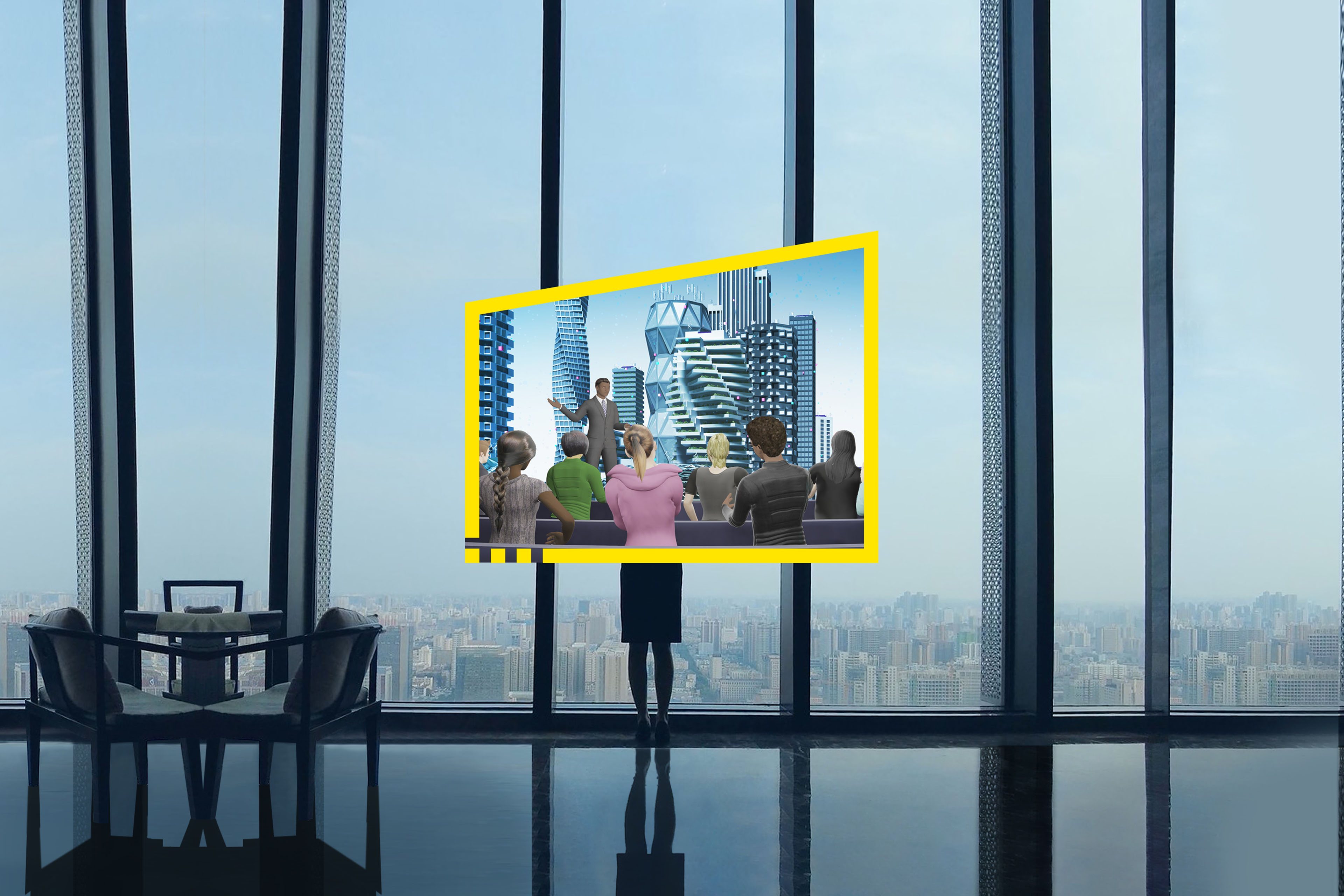EY refers to the global organization, and may refer to one or more, of the member firms of Ernst & Young Global Limited, each of which is a separate legal entity. Ernst & Young Global Limited, a UK company limited by guarantee, does not provide services to clients.

Are you thinking of metaverse as next or beyond? It’s really the present. We show you how it can transform your organization.
In brief
- The metaverse offers new ways to engage with your customers — and you must think of the impact on your employees and other partners.
- Consider what you most want to do and work backward toward a plan, starting with small steps that require little capital investment.
Even by the standards of tech acceleration, the metaverse has rocketed up the corporate agenda with amazing speed, transforming from a what-if into must-have. For many companies, this merging of the physical and digital worlds has been more theory than (virtual) reality — a place that would redefine how we work and play, and potentially upend long-established businesses, by seamlessly uniting immersive 3D environments, 5G connectivity, tokenized assets and cryptocurrencies.
Across industries and geographies reeling from two years of the pandemic, C-suites have contended with rapid increases in e-commerce and remote working. Today, the metaverse offers another evolution in how to engage with customers, employees and other stakeholders, and its adoption curves are growing steeper. Bloomberg Intelligence estimated late last year that the metaverse will offer a market opportunity of nearly $800 billion by 2024¹, and a February report by JPMorgan says: “The metaverse will likely infiltrate every sector in some way in the coming years, with the market opportunity estimated at over $1 trillion in yearly revenues².”
Media attention often gravitates toward the fun or entertaining aspects of the metaverse: the new games, online concerts and the digital art. And at the same time, this can be a distraction from the massive opportunities and complexities of the metaverse, like new ways to learn and collaborate on the job and engage with customers. EY teams are busy reimagining how we can work with clients in the metaverse — evolving from a century of in-person collaboration and a couple of decades of internet-enabled working to something altogether different.
Here’s how to think differently about the metaverse and begin experimenting, to gain real-world impact from our new virtual reality.
Evolving use cases across industries
The transformative impact of the metaverse can be vast — so much so that it can be difficult to formulate and articulate. It affects many stakeholder groups that your organization interacts with:
- Customers: Tokenized virtual goods can offer you an entirely different business model. Of course, using real money to buy digital goods remains a niche interest; you may find it worthwhile to pursue a virtual product showroom as a first step. The metaverse also offers a way to deliver a differentiated and engaging customer service experience, with agents you can see and hear, in interactive environments. Say goodbye to “Your call is very important to us.”
- Employees: The metaverse offers new ways to work together globally, beyond the familiar grid of faces in video calls. EY teams built an environment in which people could work together doing stand-up meetings on projects and collaborating with whiteboards, even though everyone was working from home. And, with the pandemic still a global concern, we’re helping to develop new employee onboarding experiences in the metaverse.
- Operations: Digital twins offer a way to replicate your production environments or to construct ideas virtually before doing so in the physical world, thanks to Internet of Things sensors and connectivity, for example. Before you build that power plant, hospital or manufacturing site, you can shape it in the metaverse — an approach we’re currently leveraging for our clients. You can also better understand how the equipment you own can wear down over time and plan out predictive maintenance.
- Partners and vendors: Information sharing can become easier by bringing your partners into the metaverse. For instance, restaurant brands can bring franchise owners into the metaverse and conduct roundtables and lead training exercises. This can also be an opportunity to engage with influencers on their terms.
What companies must consider
The possibilities are real, and at the same time your next steps may seem abstract. The good news is that the metaverse rewards experimentation, and you can start with small bets versus large M&A deals or other big bets. We recommend:
- Using future-back planning: If you work directly with consumers, you must be brainstorming now, and almost every brand must consider being in the metaverse in some capacity, in the use cases described above. Reach for a truly transformational end state and begin working back from there to determine how best to build toward those results.
- Thinking big, starting small: Begin with an experimentation. With EY wavespace™, we took two months to consider our initial foray into the metaverse. Then we gained the comfort to accelerate that into two weeks and then two days. Do you have the time, financing, culture and organizational framework that will nourish the trial-and-error nature of innovation? Will you be able to evolve as the metaverse itself evolves?
- Assessing ecosystem partners: For a cost-effective start, you will likely need to team with an outside provider of software and hardware. Expect to see a lot of tech players in the mix building platforms, and define the criteria that are important to you. For instance, today you may decide to start by entering the metaverse on a desktop or laptop rather than through a headset, or that people’s presences are represented by video based rather than an animated avatar. Who’s best suited to enable your priorities now?
- Considering the impact of decentralization: The nature of Web3 — the foundation for a lot of the metaverse, based on blockchain, tokenization and cryptocurrencies — leans more toward decentralization. It gives people autonomy that has been lacking in the “walled garden” version of the internet that we’re used to: for example, very soon, instead of one identity for one platform, you will be able to take it from place to place. This is good for individuals and at the same time can undermine business use cases for companies. Begin thinking now about the kind of balance you can strike.
Summary
This is merely the beginning of the world’s metaverse journey. All of us have some questions about where the metaverse is headed, and we must be thinking about everything in our digital toolbox to reimagine what we do and how we do it. In the end, the metaverse can be whatever you want it to be — you just have to build it!
Related metaverse articles
Metaverse: 5 questions shaping the next frontier of human experience
The convergence of physical and digital in the metaverse presents both opportunities and challenges for businesses, governments and society. Learn more.
How will the metaverse change our behavior as it reshapes experiences?
The potential impacts of the metaverse on human behavior are yet unknown, but behavioral economics can help us explore the possibilities. Find out more.
Metaverse: Could creating a virtual world build a more sustainable one?
The metaverse brings both new opportunities and concerns for sustainability. Find out what role businesses must play in shaping its impact on the planet.





